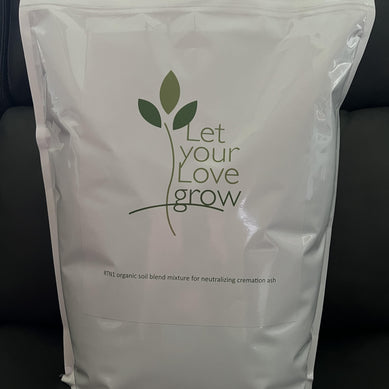The Ripple Effect of Loss: Understanding and Overcoming Secondary Losses in Grief
The pain of losing a loved one is an indescribable void, this primary loss permeates our very existence. However, what is often overlooked is the intricate web of secondary losses that follow in the wake of that initial bereavement. These secondary losses, the ripple effect of grief, can be subtle or overwhelming, some of them smack us in the face at the time of death and others gradually manifest over time. This article delves into the profound impact of secondary losses, explores their various manifestations, and offers guidance on navigating the complex terrain of grief.
Identifying the Ripple Effect
When someone we love passes away, the primary loss is unmistakable—the physical absence of that person can be overwhelming. Yet, grief is not confined to mourning this primary loss alone. The secondary losses, like hidden undercurrents, begin to surface. These losses can manifest in a myriad of ways, affecting our relationships, daily routines, and even our sense of self.
Secondary losses are often subtle, and their effects may not be immediately recognized. Identifying and acknowledging these losses is a crucial step in the healing process. Take a moment to reflect on the changes that have occurred since the primary loss and note the emotions they evoke. By naming and validating these secondary losses, you initiate a powerful journey toward understanding and growth.
Reaching Out for Support
Grieving is a uniquely personal experience, but it doesn't have to be a solitary journey. Connecting with others who comprehend the intricacies of grief can provide solace and validation. Share your thoughts and feelings with friends, family, or support groups who are willing to lend a compassionate ear.
The empathy of those who have walked a similar path can be particularly comforting. In opening up to others, you not only lighten the emotional burden but also create a supportive network that acknowledges and respects the impact of secondary losses.
Adapting With the Changes in Grief
With loss comes change, and it can be a bit daunting, especially when it surfaces amid grief, bringing forth unfamiliar emotions. The ripple effect disrupts the usual rhythms of life, throwing relationships into disarray, shaking up routines, and prompting self-reflection. But here's the thing – rather than resisting these changes, why not view them as opportunities for personal growth?
Certainly, adjusting your roles, routines, and relationships might feel overwhelming. It's like stepping into the unknown, and that can be paralyzing. But guess what? Embracing these changes can kickstart some remarkable transformations. You don't have to find meaning and purpose in everything, but keeping an open mind may lead to unexpected inner growth along the way.
It's crucial not to buy into the idea that moving forward means leaving your loved one behind. A part of you may have died with them, but another part of them still lives within you, and it's your responsibility to nurture that connection. Moving forward involves recognizing why the unknown feels a little bit scary, and acknowledging that it's often from these uncertain places that the most profound growth happens. So, move forward with courage, keep going, knowing that growth is waiting on the other side of that intimidating unknown.
Practicing Self-Compassion
Grieving is a complex process that requires time and self-compassion. Be gentle with yourself as you navigate the uncharted territory of secondary losses. Recognize that adapting to these changes is a gradual and ongoing process.
Offer yourself the same understanding and kindness you would extend to a dear friend facing a similar challenge. Self-compassion is a crucial tool for managing the emotional toll of grief and finding the strength to navigate the evolving landscape of secondary losses.
Embracing Healing and Growth
While secondary losses may bring profound challenges, they also hold the potential for transformative healing and growth. As you adapt to new realities and forge new paths, you may discover resilience and strength you didn't know you had.
Embrace these changes as opportunities for self-discovery and transformation. The ripple effect, though initially disruptive, can lead you to a place of renewed strength and purpose. Every step you take in this journey is uniquely yours, and each one brings you closer to a profound understanding of your own resilience.
Conclusion
Grief is not a linear process with a distinct endpoint; rather, it is a complex and evolving journey marked by the intricate interplay of primary and secondary losses. Recognizing and navigating the ripple effect of grief is an essential part of healing. By identifying these losses, seeking support, adapting to change, practicing self-compassion, and embracing growth, you pave the way for a renewed sense of purpose and strength. Remember, in the face of secondary losses, you are not alone—seek support, be compassionate with yourself, and open yourself to the possibilities for transformation that arise from the ripples of grief.
Meet the Author
Kelci Jager, a Certified Life Coach, Grief Coach, and Registered Nurse, found herself navigating the challenging terrain of grief when she lost her 40-year-old husband to leukemia. Left to pick up the pieces of her shattered life as a solo parent to their four sons, Kelci faced the fear of her children losing her too. However, her determination to RISE and thrive became her driving force. With a blend of professional expertise and a deeply personal journey as a widow and solo parent, Kelci possesses a strong foundation and a unique perspective. She is passionately committed to providing support and guiding others on their grief journey. For more information visit risewithgrief.com.










